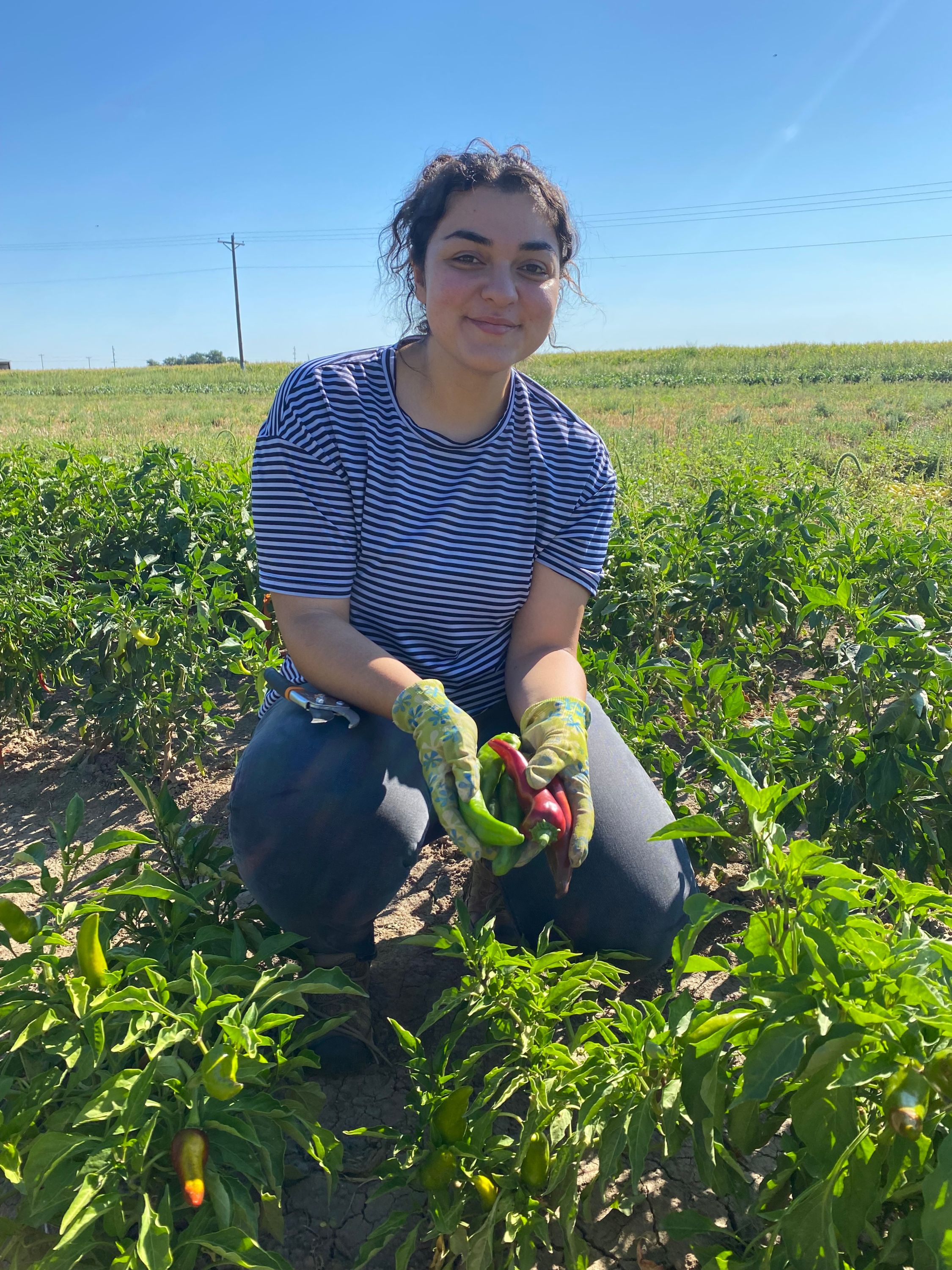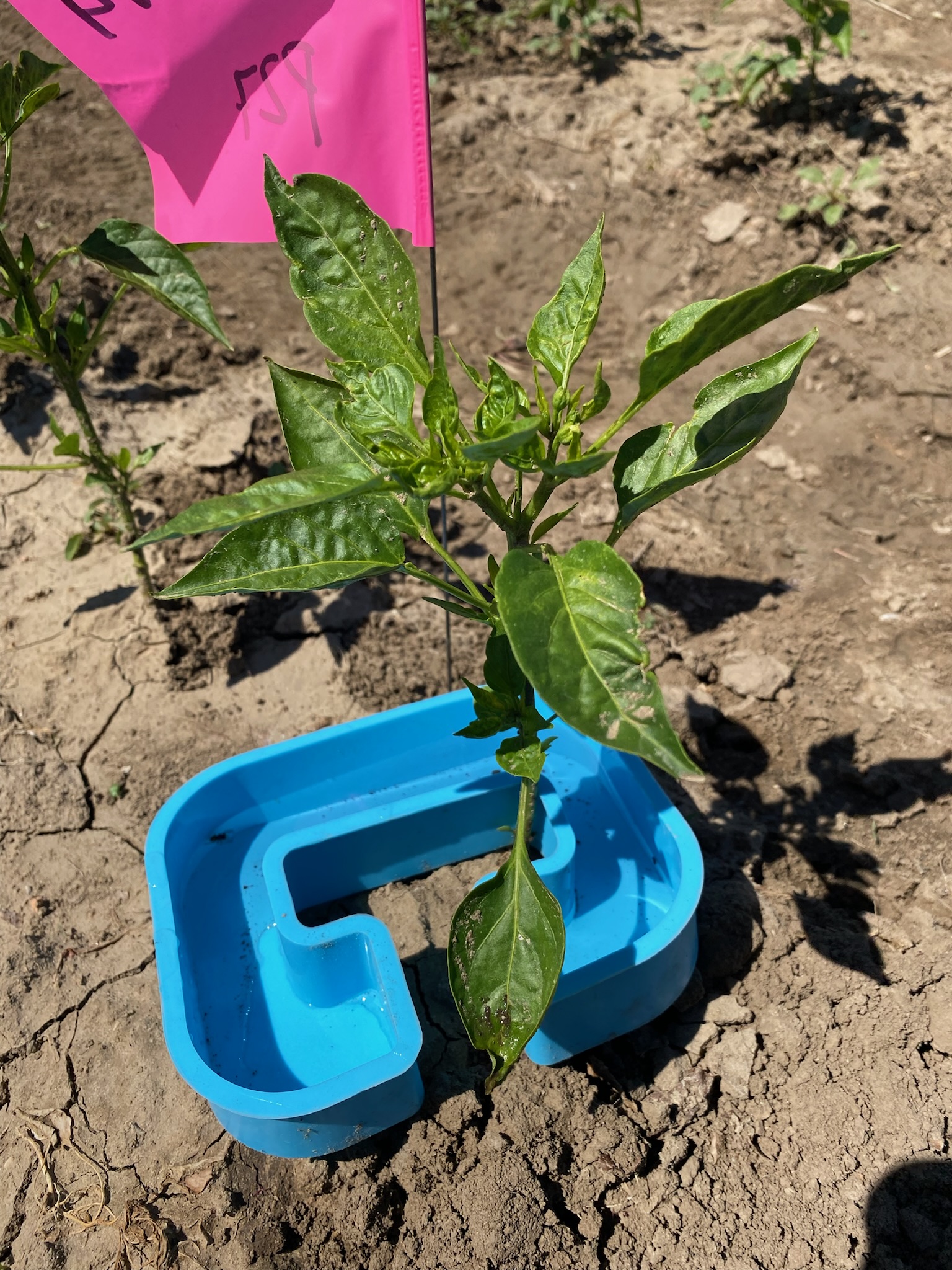Testing the Ecology of Fear in Colorado Chile Pepper Fields

by Steve Elliott
Western IPM Center
Tiny aphids are causing outsized losses for chile pepper growers in Colorado, even though the insects don’t feed on that particular crop and don’t linger in it.
Instead, aphids move through chile fields, especially after nearby alfalfa fields are cut. That wasn’t a problem until 2019 when alfalfa mosaic virus appeared in southern Colorado. Aphids pick up the virus feeding on alfalfa, then transmit it to pepper plants as they probe to see if they’re palatable. In that quick taste, susceptible chile pepper varieties acquire the virus, wither and produce unsalable fruit.
“The virus remains on the aphid mouthparts and they transmit it like a dirty needle,” said Lara Amiri-Kazaz, a first-year doctoral candidate at Colorado State University. “Even if they're not feeding on these peppers, the aphids probe the plants and that poke is all it takes to transmit the virus. Then the aphids move on and are no longer there.”
That behavior makes pesticides ineffective – the insects aren’t in the crop enough to come across a contact insecticide and wouldn’t ingest a systemic one. It also makes traditional biocontrol – building a balance between predator and prey species – difficult. Since the aphids don’t stay in chile fields, neither would the beneficial insects that eat them.
So Amiri-Kazaz is researching something novel: fear.
Working with Dr. Ada Szczepaniec, an associate professor of horticultural entomology at Colorado State, Amiri-Kazaz received a Western SARE graduate student grant to “explore the consumptive and non-consumptive effects of predators of aphids.”
In less scientific terms, they’re looking at whether a generalist insect predator species like minute pirate bugs – who don’t prefer to feed on aphids but will – can control aphids in chile pepper by either eating them or scaring them away.
That pest-management model, known as the ecology of fear, is seen with rodents and raptors where just the presence of hawks and owls reduces rodent populations beyond what their feeding accounts for.
“These non-consumptive effects have been studied in the laboratory with insects, and we know there is an avoidant behavior,” Amiri-Kazaz explained. “Aphids, when they see or sense a potential threat near them, will just drop off the plant. We want to test it in the field. Is this something that will actually take place, and will it take place at a level that’s effective and worth it for the farmers?”

Beginning this summer, Amiri-Kazaz has been releasing minute pirate bugs in several cooperating farmers’ fields, monitoring for aphids dropping off plants into traps and testing plants for alfalfa mosaic virus to measure both disease prevalence in treated versus untreated fields and the susceptibility of various chile varieties to alfalfa mosaic virus.
Success, obviously, would be finding less disease (and more dropped-to-the-ground aphids) in the plots where minute pirate bugs were released. Even then, both Amiri-Kazaz and Szczepaniec expect this tactic would become a part of a larger IPM program.
“It’s going to a combination of several tactics that hopefully make this work,” Szczepaniec said. “And that’s real-life IPM.”
If it’s successful, though, it has implications for other crop-pest combinations where chemical pesticides are ineffective due to resistance, regulation or other factors.
The data analysis will begin this winter, but for Amiri-Kazaz, learning is already under way.
“Our project has so many components it can be like a maze figuring them all out,” she said. “But that’s the reason I wanted to do it. The challenge of trying to do IPM that’s so applied really teaches you so many things in a short amount of time. I think diving into the deep end my first year, working with producers, I’ve learned so much.”
And because Amiri-Kazaz chose a very applied, in-the-field IPM project rather than something limited to a lab or greenhouse, Szczepaniec added something else to her to-do list.
“Developing an actual extension program for this is part of the project,” Szczepaniec said. “I am trying to make sure that Lara has a meaningful chapter in her dissertation that is all about extension. She’s really passionate about it, so there’s going to be a structured effort to teach her how to do extension and measure the impact of the work.”